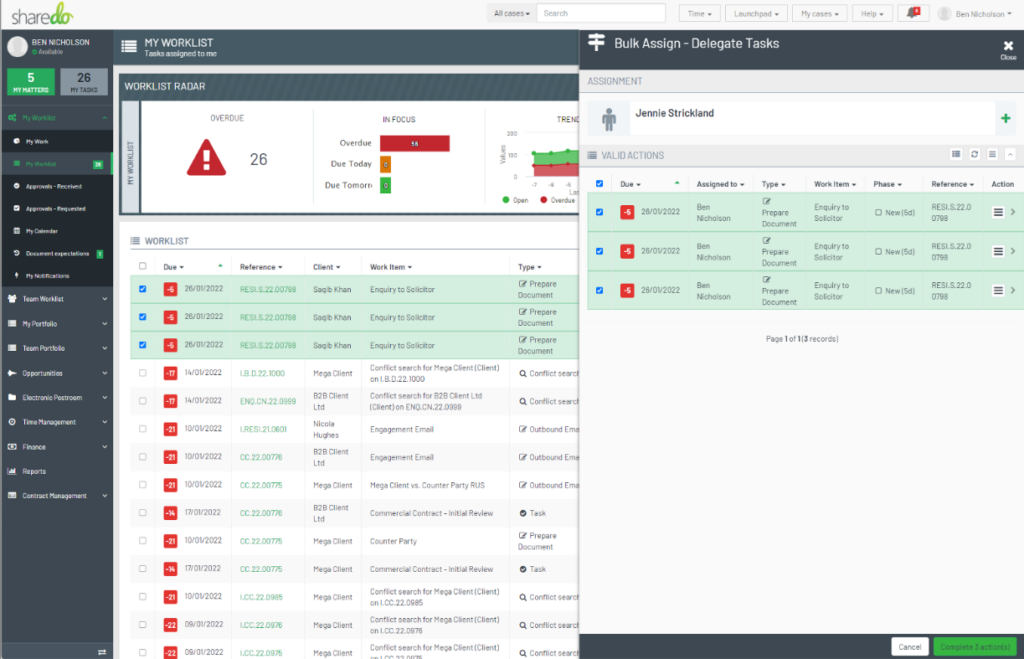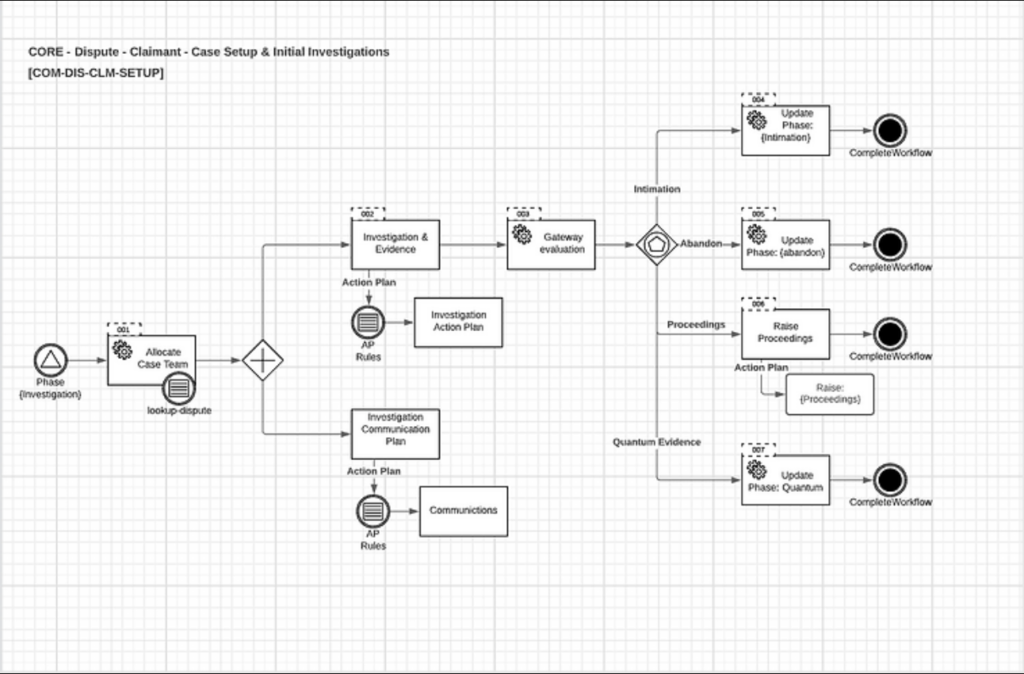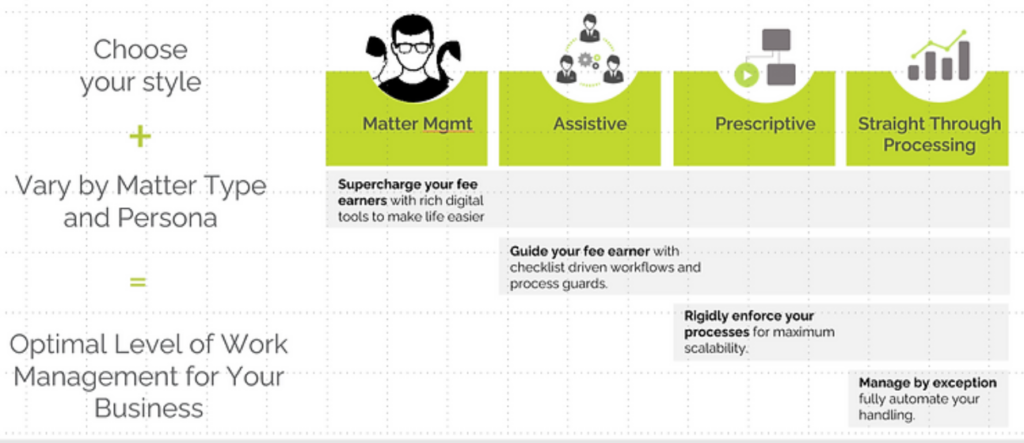Six small but powerful ways to help your lawyers do more each day
sharedo
on
April 19, 2022
Introduction
Competitive pressures, juggling client expectations and the age-old challenge to “do more for less” affects the legal services sector like any other industry.
But with the scarcity of legal talent driving law firms to do even more each day within existing headcount, the problem is exacerbated and unlikely to resolve itself anytime soon.
Tech “done right” can play a huge role in enabling lawyers to streamline and super-charge performance and, ultimately, be more profitable.
Here’s six ways in which we are helping thousands of lawyers be more efficient and achieve super-human results to out-perform their competitors.
1. Go with the flow and avoid ‘context switching’
Many have called this now legendary Clubhouse livestream comment by one of the great entrepreneurial innovators of our time as a deeply profound statement.
What Musk means is that when we are constantly switching from one task to another, our productivity, and indeed our mind, is destroyed. Put simply, we are constantly breaking our natural flow and jeopardising the successful completion of each task.
While we agree that Musk’s observation goes to the very heart of one of modern life’s biggest impediments, it’s not a new phenomenon. We’re positively fixated on addressing this very issue and have spent the last five years and more on developing technology solutions to improve and enhance flow time for legal firms.
So how does ShareDo help with context switching?
ShareDo prioritises your workload, enabling you to quickly see the most pressing task that requires your focus at any single point in time. It constantly adapts and re-prioritises tasks as matters evolve, giving you the right focus at the right time.
ShareDo also monitors your work against critical success factors. If something changes, such as a task is soon to be overdue or how now been flagged as more urgent, it alerts you. And, importantly, it provides you with any supporting tools and contextual help to reduce the likelihood of switching to a different task.
Just like we would recommend you do with other technology apps like e-mail, Slack and Teams, ShareDo also lets you “mute” notifications to avoid that ever-present curse of context switching. This can be set at a granular level, so you can again minimise any breaks in flow.
However much we may think that we’ve reached legendary status in multi-tasking, our brains cannot focus on two sources of input at one time.
2. Delegate tasks and optimise your resource levels
Outside of the “lawyering” to be done on a matter, there are many activities which can be delegated to support staff, shared service centres or processing teams. Activities such as compliance activities, litigation and post completion support require a lot of resource to complete.
Given the scarcity of legal talent, it’s imperative for your lawyers to be able to delegate these tasks quickly and reliably. Added to this, you need to be confident that tasks are delegated safe in the knowledge that your key people will be kept informed of their outcome.
ShareDo provides an ‘instant delegate’ function for all activity, alongside resourcing dashboards and notifications so you can keep track of progress and overall performance.

But managing traffic of work is only half the picture.
Implementing a shared service centre using ShareDo is an excellent way to centralise common processes and provide relief for fee-earners from repetitive non-legal tasks. Again, they’ll always remain up-to-date on progress and vital information.
This brings a real step-change to our client’s overall performance. But there is more that can be achieved by automating the allocation of these tasks through ‘allocation rules’ that makes the whole process even more streamlined.
ShareDo brings extra power to your people and operations through an accumulation of incremental improvements to how you collaborate
3. Great UX saves many minutes, many times each day
When you think about user experience (UX) in digital platforms, you may mistakenly think about a slickly designed user interface (UI) or quick loading app.
UX is about much more than this.
It’s about applying a deep understanding of how people can best interact with your platform to complete tasks and collaborate with others to be more successful. It’s about focusing on people’s needs and making every task they complete as streamlined and as intuitive as possible.
Optimising case interactions can shave minutes off every single process, each and every time it is undertaken. These frequently saved minutes quickly add up to huge savings. Minutes that enable your fee-earners to achieve the super-human results they thrive on.
Most case management systems are designed to be the key operational system for your internal staff and the platform they will be using for a good proportion of each day. Poorly designed case management systems often do more harm than good. They not only frustrate your people but can lead to above average employee attrition. Needless to say, it is imperative that user experience is “front of mind” for a case management system.
ShareDo’s UX is designed explicitly for legal teams and individuals. Designed and built from the ground up, it is not a by-product of a software platform designed for a different purpose. Instead, every ‘line of code’ has been written and continually optimised to streamline for legal processes. This is why we confidently describe ShareDo as being “designed for you”.
Truly great UX, however, recognises that not all ‘users’ are the same. In addition to varying job roles, they will have different needs, skills and preferred styles of working to name but a few.
ShareDo is powered by a unique ‘persona engine’ that enables the personalisation of every single interaction by role and user type.
4. Unprecedented levels of ‘Automated Precedents’
Why reinvent the wheel when you can press a button and have a document generated for you in seconds.
ShareDo contains advanced automated document assembly functionality to enable every member of your team to “do more for less”.
Most routine operation – whether simple or multi-faceted – is automated, transferring further minutes of time to fee-earning activities.
5. Seamless sharing and clever collaboration
You’ve created a brilliant piece of legal advice and need to share it. But, as is often the case, time is limited, and it’s put aside for when you have more time to do this. Time that will never come.
Just like any other form of interaction, ShareDo makes it easy to save time and seamlessly share this with relevant groups, saving you that all important time and avoidance of dreaded context switching.
As the name suggests, ShareDo makes sharing easy. Within a couple of clicks or drag-and-drop of your mouse, you can send files via DocuSign, email, outsourced post, or share materials via a Virtual Dataroom, safe in the knowledge that external access is secure and strictly controlled.
6. Automate to save time
Probably the most effective way to save time is to simply to get the “machine” to do the work for you.
By automating key steps in your processes – or indeed the whole process – you can significantly boost your “lawyering” capacity.
The key is to automate appropriately for you “work style”, as different user groups and different practice groups will need varying degrees of automation. That’s why ShareDo advance workflow capabilities enable you to support different work management styles across your business.
+1. Save an hour a day
At ShareDo, we’re all about the +1s, and this list-based article is no different!
Imagine what you could do if you had an additional working hour each day?
Bill more.
Contribute to practice-wide initiatives.
Update your knowledge management.
Focus on client service improvements.
Support a colleague.
Something else?
……..Or (whisper it) simply feel less pressure.
Many of our clients set themselves the challenge of ‘saving an hour a day’ – a bold statement, perhaps, but one that is achievable when you look holistically at the savings that could be achieved.




